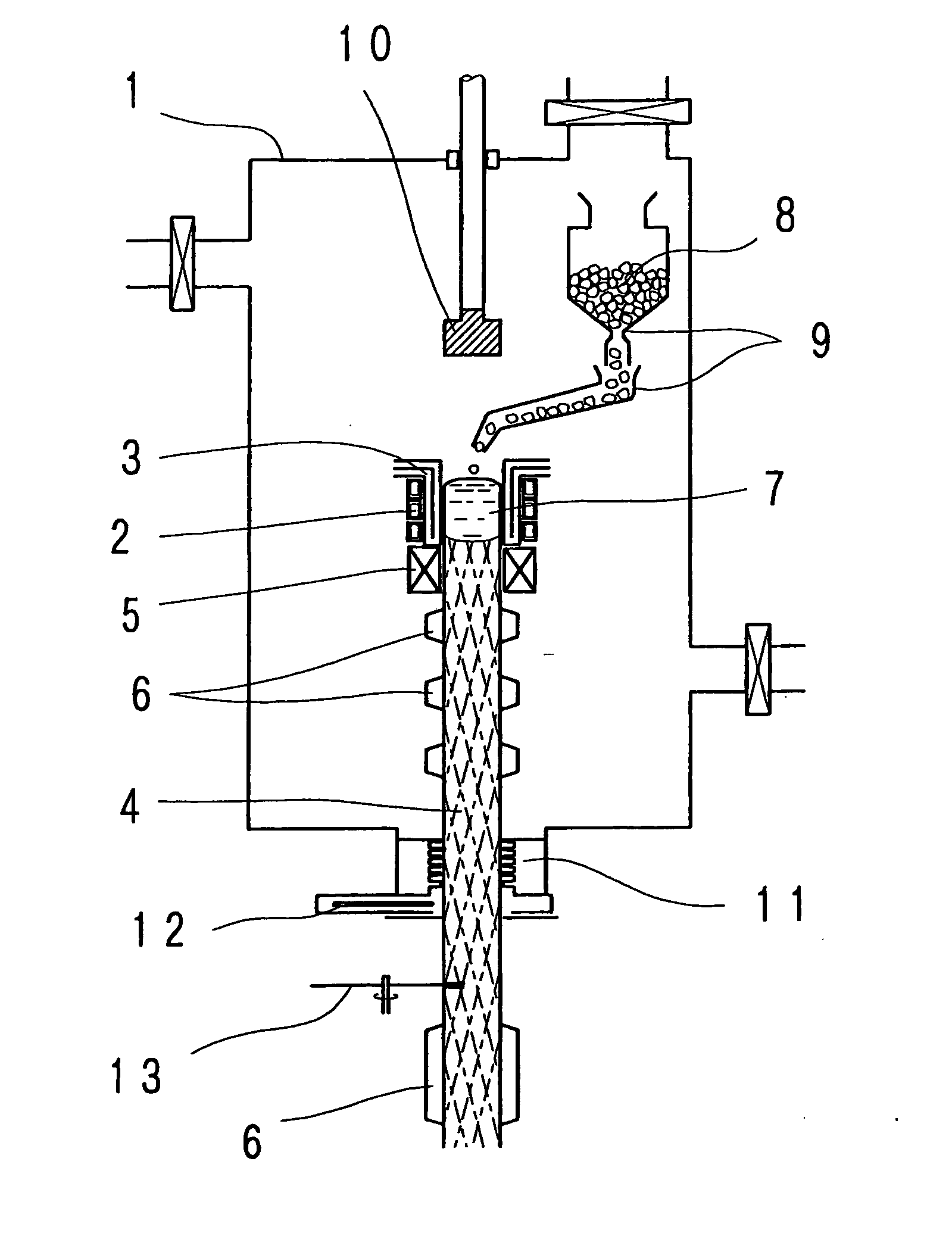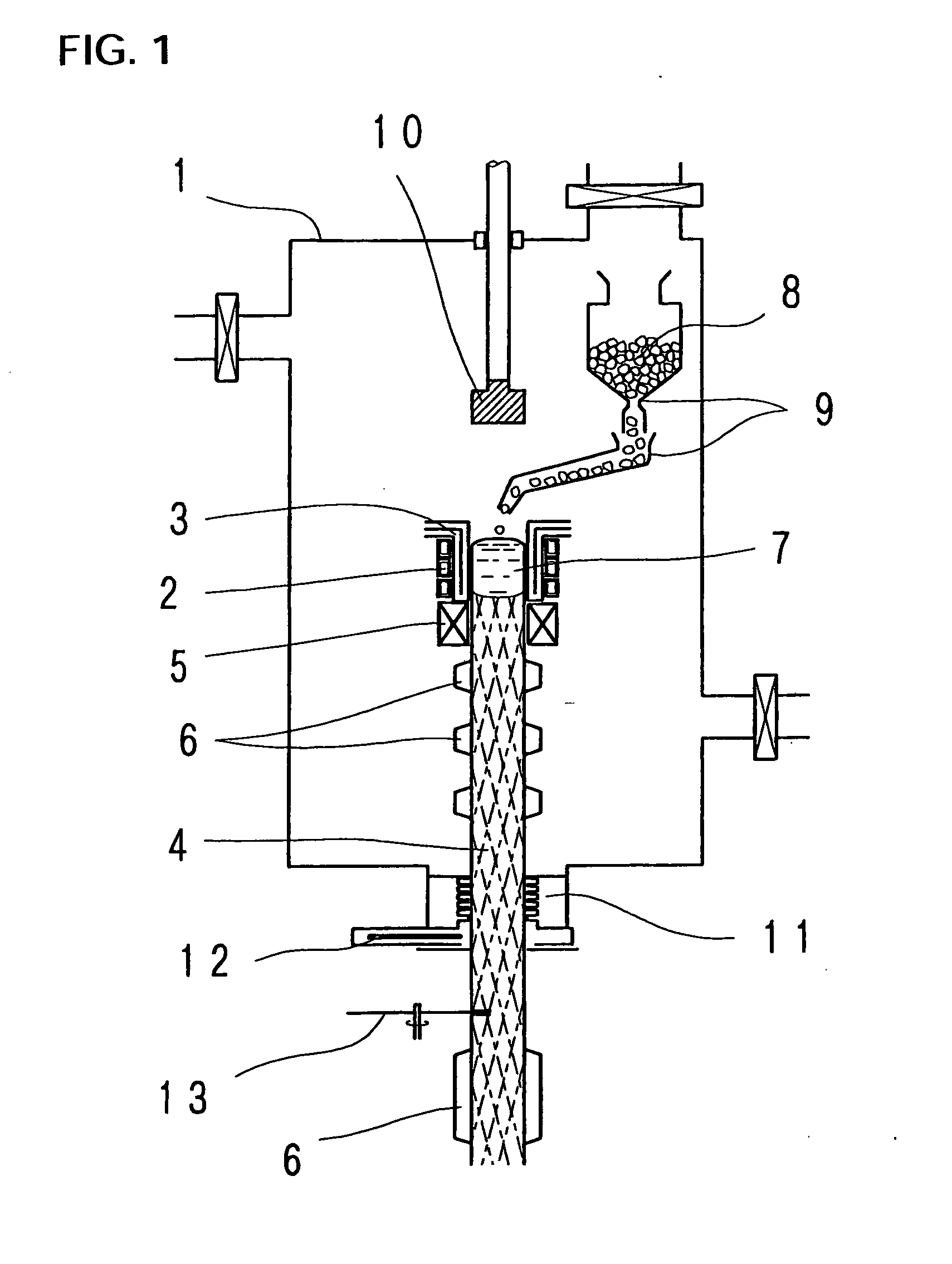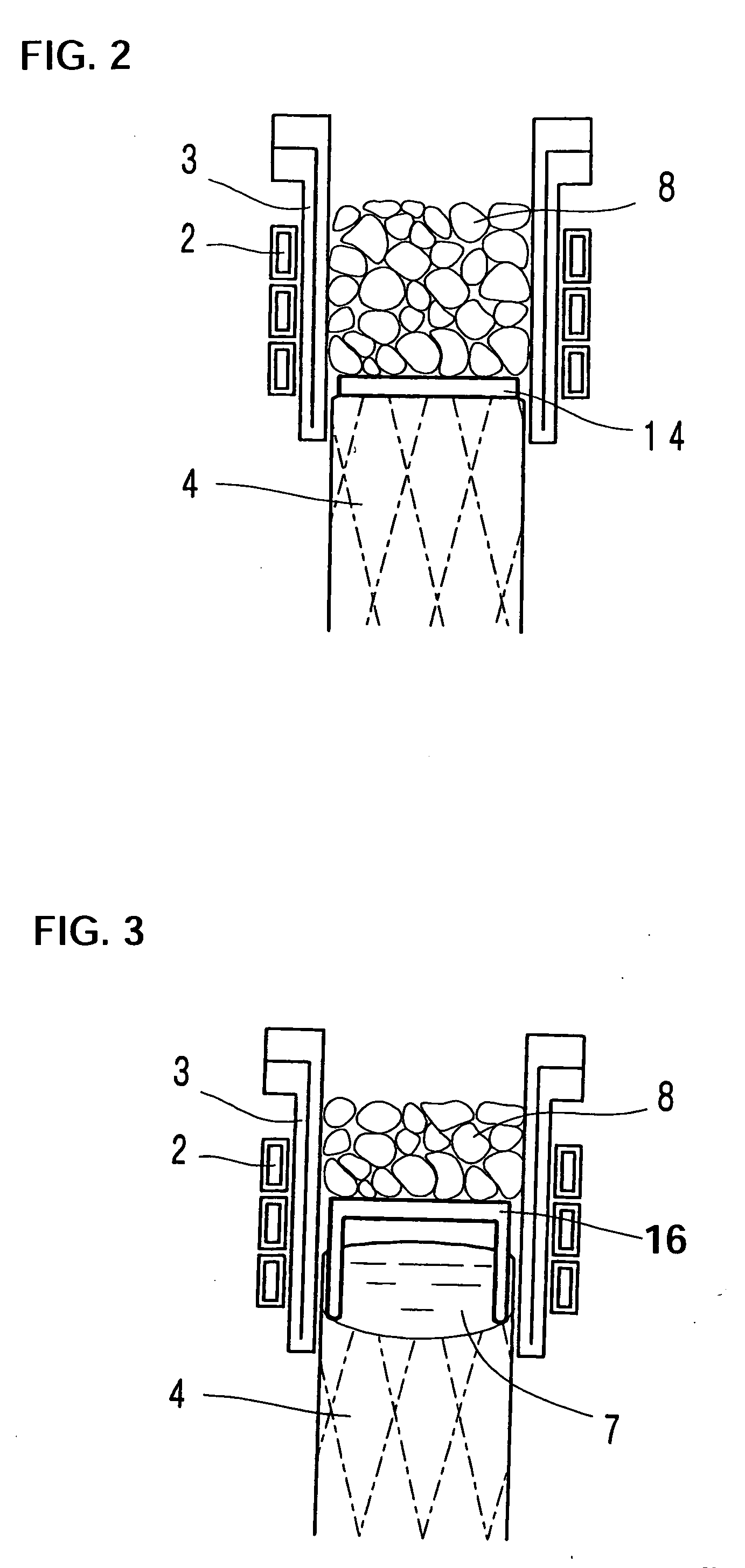Method for casting polycrystalline silicon
a polycrystalline silicon and casting technology, applied in the direction of crystal growth process, polycrystalline material growth, chemistry apparatus and processes, etc., can solve the problems of degrading the electrical properties of the solar cell substrate, excessive mixture of oxygen, and increasing the production cost to raise the power generation price, so as to reduce the production cost of the solar energy generation apparatus, the effect of reducing the manufacturing cos
- Summary
- Abstract
- Description
- Claims
- Application Information
AI Technical Summary
Benefits of technology
Problems solved by technology
Method used
Image
Examples
examples
[0046] The polycrystalline silicon ingot was produced with the water-cooled crucible induction melting-casting apparatus whose sectional structure was schematically shown in FIG. 2. The copper water-cooled crucible placed in the heating induction heating coil 2 was configured to be in the square having one side of 170 mm in horizontal section of the inner wall, and the induction heating coil 2 had an effective height of 160 mm.
[0047] A silicon ingot (dummy ingot) having the same sectional shape as the ingot and the length of 200 mm was inserted into the crucible such that lower-end position of the induction heating coil 2 was set at the upper surface of the dummy ingot, and the lump-like silicon of the raw material was charged on the dummy ingot. After the chamber was evacuated to a vacuum, argon gas was introduced to the atmospheric pressure, and the melting got started. Because the heat generation of the initial raw material was insufficient at the beginning of the heating, the c...
PUM
| Property | Measurement | Unit |
|---|---|---|
| height | aaaaa | aaaaa |
| height | aaaaa | aaaaa |
| length | aaaaa | aaaaa |
Abstract
Description
Claims
Application Information
 Login to View More
Login to View More - R&D
- Intellectual Property
- Life Sciences
- Materials
- Tech Scout
- Unparalleled Data Quality
- Higher Quality Content
- 60% Fewer Hallucinations
Browse by: Latest US Patents, China's latest patents, Technical Efficacy Thesaurus, Application Domain, Technology Topic, Popular Technical Reports.
© 2025 PatSnap. All rights reserved.Legal|Privacy policy|Modern Slavery Act Transparency Statement|Sitemap|About US| Contact US: help@patsnap.com



